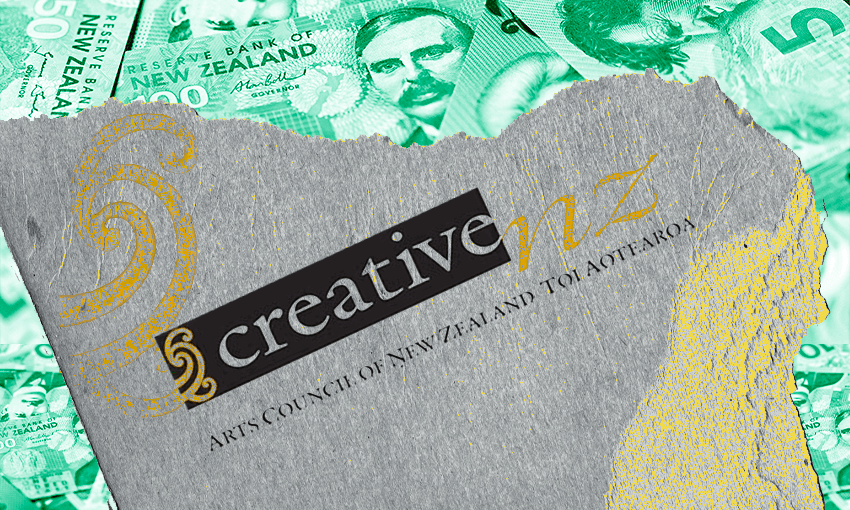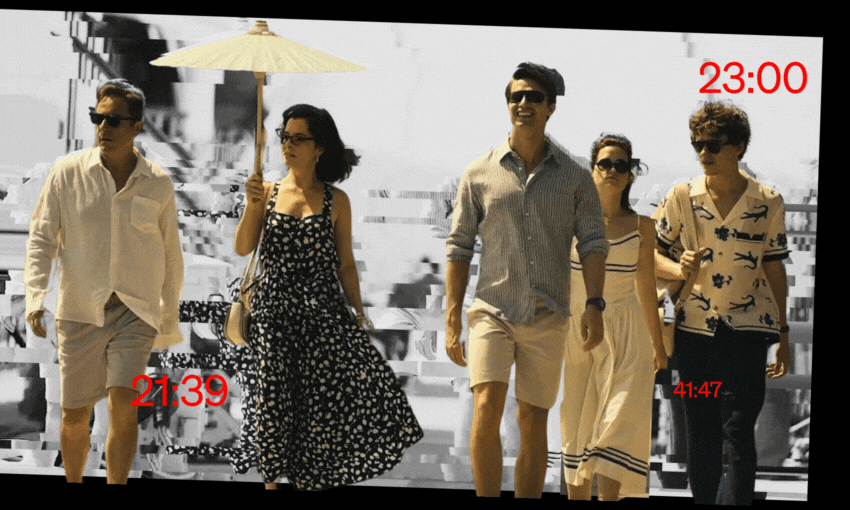Creative New Zealand recently announced a massive funding restructure. Here’s what it means and what artists and sector leaders think.
Creative New Zealand, the country’s leading Crown entity for supporting and funding the arts, recently announced eight new funds in a major overhaul of its funding structure, to take effect in 2024.
The new programme is titled For The Arts and broadly, aims to fund around creation, as opposed to a final product. The new programme will replace the body’s previous structures, which included Arts Grants (one-off grants for projects or development), Annual Arts Grant (to fund a year of work for a company or individual), and the recently-introduced (and widely criticised) caps and deadlines. The changes come after feedback was sought from the community.
The new funds include:
- The Creative Fellowship Fund: funding to support artists, practitioners and collaboratives to “develop, innovate and create”.
- The Development Fund for Artists and Practitioners: funding to support artists and practitioners to expand their skills and careers.
- The Creative Impact Fund: funding to support artists, practitioners and collaboratives to make share and present work that enriches audiences and communities.
- The Early Career Fund: funding to support artists, practitioners and collaboratives at the early stage of their career.
- The Development Fund for Arts Organisations and Groups: funding for organisations to build their capability to create long-term success.
- Two Arts Organisations and Groups Funds (up to $50,000 and between $50,000 and $125,000): funding for organisations and groups to deliver programmes of work for up to two years.
- The Residencies, Internships and Fellowships Fund: funding to support providers to offer a residency, fellowship or internship for New Zealand practitioners for up to three years.
A New Leaders programme, to support new and emerging leaders to grow their skills and build peer support networks, will be established, but with no grants attached to it. Most of these grants will be contested on an annual basis, with the exception of the Creative Fellowship Fund and the Creative Impact Fund, which will open twice a year, and the Early Career Fund, which is open all year, with four notification periods. None of these new funds affect CNZ’s larger investment programmes, so are mostly targeted at independent artists, small organisations and festivals.
It is a seismic shift for the funding body, easily the largest since the Covid relief funds in 2020. To help make sense of them, we’ve sought a range of responses from across the sector on the good, the bad and the downright confusing in these funding structure shifts.
James Nokise, comedian, columnist and podcaster
People have always complained about arts funding, and they probably always will. Perhaps CNZ was taken aback by the ferocity of the response to their enquiries.
What is encouraging is that this overhaul shows they were listening. And to be fair, not everyone talking to them was probably always easy to listen to.
Will it work? I think, like any show, we just have to see what it looks like when it’s up and running. I think the scope and scale of the changes means the arts community (such as it is) should give it a chance, by which I mean allow for some speed bumps in getting it going.
There’s a couple of definitions around collaborators where I could see people potentially slipping through the gaps, but I like to think the spirit of what CNZ is talking about means a shift to looking to catch any slips, and adjust, rather than go “oh well”.
Look, all in all, this is a decent set of changes, and I think it’s the kind of change that hopefully encourages new applicants rather than scares them off.
It’s a little bittersweet that this is happening as we get a government where the future deputy prime minister has directly questioned the validity of CNZ-funded artists. It is unfortunate, though perhaps symptomatic, that it took until the last days of the Labour government for this to come about.
While I agree with the kaupapa of funding intent and not results, I also worry that kaupapa will be particularly targeted politically in the months to come.
Helena-Jane Kilkelly, Ōtepoti-based producer
For a company our size, it appears more administrative work is needed for less pūtea. While it’s great to see increased support for emerging artists and that applications do not need to be as outcome-focused as previously, we’re struck by the omission (yet again) of options for mid-career practitioners/companies; those without boards or committees or who, for example, haven’t the ongoing funds and resources to engage professional accountants.
Furthermore, if we obtained a grant under the Arts Organisations and Groups Fund – in theory the best fit for our programmes – we’re effectively looking at having no CNZ support in 2024, as this funding doesn’t kick in until next December. Finally, until CNZ’s coffers are topped up considerably and equitable distribution around the motu is guaranteed, very little changes in essence overall.
Daniel Vernon, writer/illustrator (Yeehaw the Boys) and musician (DARTZ)
I think this is a decent step in making funding clearer and more accessible for artists. Personally, I still would like more transparency on how CNZ are adapting their assessment criteria to how both artists distribute, and how audiences consume art in the modern age.
With many up-and-coming artists using platforms such as TikTok, Instagram, Substack and a wide berth of diverse mediums (comics, shorts, prints), I hope CNZ can adapt and become more accessible for younger artists who are creating meaningful work on non-traditional platforms and expand from heritage formats.
Claire Mabey, The Spinoff books editor
The new funding structure, and the rationale behind each fund, is refreshingly logical. Separating artists from organisations is one of those “can’t believe that wasn’t done earlier” amendments. The language around each of the funds is clear, and to me reflects what CNZ say they’ve done: listen to what artists need.
I particularly like the language around “valuing artists’ time” (often an uphill battle for freelancers and independents) and the new Creative Fellowship Fund which aims to give artist’s time to develop work and enable risk-taking. That is the level of trust and support that has been missing in funding structures across the board.
What is still distressing is simply the lack of funding available. The decrease in upper funding limits is a sign of that. Demand is not being met which means that our arts sector is under stress. That will ultimately lead to a depleting pool of active practitioners and fewer opportunities for audiences. But at least for now the approach to disseminating the money is fair and underpinned by clear, welcoming language that values what artists do.
Sam Snedden, theatre maker
I RSVPed to the webinar with some trepidation. I have been to many of them, and they are usually the same: “We have less money” and “Here are some minor tweaks characterised as major changes”.
What I absolutely did not expect was for there to be a seismic shift in the way they do things. The process used to arrive at it was rigorous and incorporated a huge amount of voices. What they are presenting is a road map for genuinely transformational, human-centred arts investment. I’m waiting to see the details but I’m cautiously optimistic.
That caution is partly down to how they intend to roll it out under the incoming government. Act in particular has been highly critical of CNZ, and wants them to fund projects that “appeal to the widest groups of people”. That’s hardly a recipe for the creation of groundbreaking, form-pushing work.
But I’m hopeful, it really seems like they have listened to artists. I hope they don’t lose their nerve.
Van Mei, director of the Pantograph Punch
The new art grants are a huge step in the right direction for Creative New Zealand in terms of the consultation with artists and arts workers that have formed the shape of their new funding programme. There are quite a few more funding streams than the previous annual arts grant rounds, which is confusing to wrap your head around at first, but the changes made ultimately reflect a broader investment in the work of artists, not just singular creative projects, in mind. Plus the bonus of having streamlined funds is there’ll be less competition between independent artists and arts organisations on higher resourcing.
My overarching concern is that in outgoing CE Stephen Wainwright’s October blog post, the financial picture for Creative New Zealand is moving back to pre-pandemic level funding (despite the brittle infrastructure of the arts sector being absolutely ravaged by the pandemic) and forecasting a drop in revenue in the tens of millions for 2024/25.
So there are exciting new funds, but for the time being, there’s actually less material resourcing to give across these streams than in the last few years, and those in the arts have already seen how thin on the ground resourcing support is. Unless there’s proper advocacy and necessary support provided to Creative New Zealand to materially invest in these programmes, the initial success of them might be impacted by the penny-pinching austerity times we live in. Perhaps the new government could take a bold move to finally invest more in the arts?
Jordan Hamel, poet
As I’m currently living in a country [United States of America] where national public arts funding is essentially non-existent, just reading the name Creative New Zealand brings a patriotic tear to my eye. But I’m trying not to let that cloud my judgement. It’s a cop out to say we’ll have to wait and see whether this new approach is a success, but it feels like CNZ have at least been listening to artists, trying to avoid the inequity of pitting our most established artists against new voices, organisations against individuals.
There’s some clear intentionality here around giving emerging artists a launch pad and growing their practice. But, as always, I worry that the less restrictive funds will be drowned in applications and there won’t be enough to go around. Also, with the looming neoliberal cerebus of Chris, Dave and Winnie, salivating over public austerity, CNZ’s funding levels and resources feel as precarious as ever.



